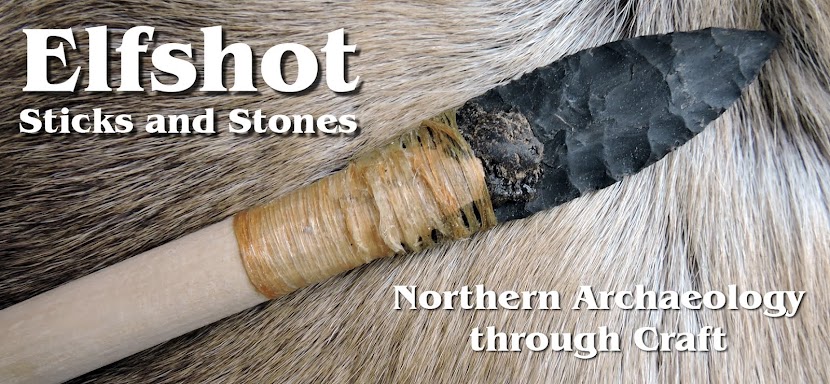 |
| Relieved when they match |
I finished the three Beothuk pendant reproductions that I've been working on over the past week or so. I made them from
caribou mandibles. This was the first time I used caribou mandibles as the source for the bone, so it was a bit of an experiment. Based on what I saw this past week, I will certainly use jawbones for pendant blanks again. I wouldn't say that all Beothuk Pendants were made from caribou mandibles, but I feel that many of them likely were.
 |
Beothuk Bone Pendant Reproductions. Range in length from 8 cm - 12.5 cm
The surface shown here is the smooth, exterior surface of the bone. The interior surface tends to be a little rougher. I signed them with tiny "TR"s along the lateral edge (not visible in this photo), so they won't be confused for the original artifacts. |
 |
| Caribou Jawbones make good blanks |
The mandibles provide good dense bone which is a perfect match for the thickness of the flat pendants and the slight curves and undulations seen in many of the original artifacts are very good matches for the blanks that come out of a caribou jaw bone. The inside of the mandible has a little more surface texture, but its still very dense and holds the incised pattern quite well.
 |
| These are Beothuk bone pendants (and other bone pieces) on display in the Mary March Museum in Grand Falls-Windsor. |
 |
| The interior, rough side |
I tried three areas of the jawbones for pendant blanks; the inside of the body of the mandible, the outside of the body of the mandible, and the ascending ramus. The best bone came from the outside of the jawbone - it was the flatest and smoothest and provides the largest workable area. The inside of the jawbone is a close second, although it has a slightly more irregular surface and the blanks aren't quite as flat. The ascending ramus didn't work so well. The bone on that part of the mandible is so thin that its translucent and I felt that it would create too fragile of a pendant. It would also be very easy to gouge right through it while incising the pattern.
 |
| Cathy Driedzic watercolour |
I wanted to antique each one slightly differently, so that they wouldn't all look like they were made by one person at the same time. I used red ochre for the finish, but I stained the blanks to different degrees with tea and charcoal to help change their appearance. The archaeologist who commissioned these reproductions intends to display them together as a set and grow the collection over time. I'm looking forward to seeing the collection grow.
 |
| This is a detail from Cathy Driedzic's watercolour Beothuk Bone Pendants. Lori bought this painting for me in 2007 from a Craft Council Gallery show timed to coincide with the Canadian Archaeology Association's annual conference in St. John's. One of the pendants in this set happens to be the same as one in Cathy's painting. |
Photo Credits: Tim Rast








No comments:
Post a Comment